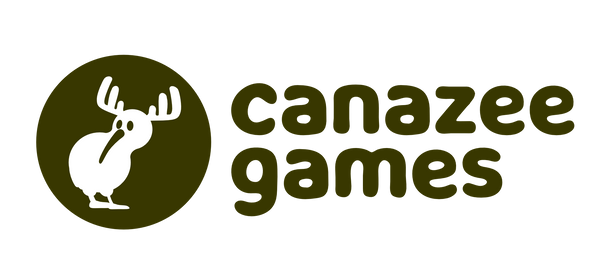In Februrary 2021, when Trent approached me with his idea for a board game themed around the iconic Canadian destination of Muskoka, my imagination was immediately kicked into overdrive. I'd spent countless summers growing up, camping, adventuring, working, falling in love, and now raising my children in this magical place. It's a core thread of my person, and instantly my mind started racing through the moments, images and feelings that the Muskoka region could evoke.
Trent asked if I would help him bring this idea to life — to imbue it with a charm and visual appeal that would entice anyone who saw it to take a closer look. At one of our first meetings, Trent shared with me his initial prototype — and while it made clear that I had a lot of work to do, I loved the essentially blank slate that was in front of me.
My typical process with any creative work is highly iterative — try something, see if it works for me, and then try something else until I'm happy with the result. I don't consider myself the most accomplished visual artist, so I knew I needed a system and process that would allow me to experiment and fine-tune the artwork in the game without it being too much of a manual process.
For example, I knew that if I hand painted the board artwork, it would neither be as good as I'd like it to be, and if I wanted to make any changes they would be difficult, time-consuming and laborious — not conducive to the way I produce my best work.
I experimented early on with a new workflow for this project: modelling some scenery in free 3D software Blender, lighting and rendering it to my liking, and using Photoshop to "finish it" — hand painting over parts, balancing color, adding texture, etc. Here are some of the very early experiments of this process:
At this point I was becoming happier with the results — and more importantly, I was confident that with this process I could achieve something I would be proud of. After more experimenting, I started to sketch out the actual map that would become the foundation of the board. Translating the Muskoka geography into a recognizable but exaggerated topography that suited the gameplay was the next challenge.
In order to produce a map that I could iterate quickly, I developed a system of 2D images that would "generate" the 3D terrain — everything from the height of the land, to where the water was, to the density and dispersion of trees, rocks, and roads — was defined by a series of 2D images that I could draw on my iPad.
Height map, diffuse (color) map and particle map (trees in green, rocks in yellow, etc)
With this system I could easily tweak and refine the entire geography of the board, which was exactly my hope. From here came the process of refining the visual style, as well as filling in the map with nearly 100 hand-modelled animals, buildings, and attractions that feature in the game.
At the same time, I figured I could use the same assets I'd created for the board to render the artwork for the many cards that the game required. By modifying the lighting, camera placement, and in some cases developing new shaders for the render, I was able to produce images like these:
And with this same process, but a more involved post-processing pipeline, I was able to produce some gorgeous, painterly images for use in the instruction manual:
This was also the process used to generate the box cover, which is one piece I'm particularly proud of:
At the end of the day, I generated about 30GB of artwork for Muskoka: The Board Game, and probably spent a few hundred hours doing so. This is just a tiny peek into the process, which also involved iconography, graphic design of the cards, tokens, board, manual, etc., typesetting, photography — the list goes on!
It's my sincere hope that everyone who experiences Muskoka: The Board Game will immediately see the care, passion and detail that I put into every single aspect of this game's design.
A few more behind-the-scenes shots:
R&R visual motif on the back of the R&R cards.
And the (almost!) finished board map:




































2 comments
Your use of Blender is so sweet! I downloaded Blender when I got a resin printer, and I’m an artist (digital, traditional, and photography) and when I couldn’t immediately sculpt a masterpiece it frustrated me so much, haha.
Also LOVE the logo!
WOW, Darrin – what a wonderful invitation into a little more of the ‘background’ of this very exciting venture. The work looks amazing and, as you mentioned, knowing some of the ‘backstory’ will make playing the game at the cottage with friends even more fun! Well done and I am sure I speak for everyone when I say we can’t wait to start playing!!!!